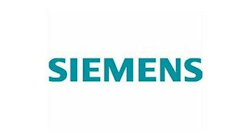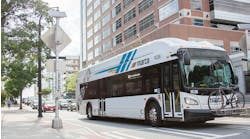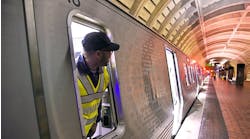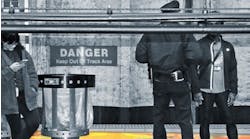Today's transit agencies face tremendous challenges as they chart a path to drive their constituents deep into the 21st century. Finding the delicate balance between budgetary issues, operational costs, lifespan, environmental concerns and future growth can be a daunting task that many transit agencies are simply uncomfortable navigating alone. Here are some tips to transforming your bus fleet into a sustainable fleet of the future.
- 1) Look ahead – As the global trend toward urbanization combines with growing traffic congestion, new emission guidelines and urban air quality standards set forth by the Environmental Protection Agency, more people will be using buses as a means of mass transport. The demands placed on urban buses will therefore become more exacting as they will be expected to be easy on the environment, with reduced CO2 and particle (PM) emissions, and will also have to consume less fuel and run as quietly as possible. A transition to emission free transport requires an agency to look at its bus powertrain with a different view.
- 2) Set your path – Work with other local, regional, state and federal agencies and organizations to conduct an infrastructure and transportation analysis of your city's future growth and plan your transportation needs accordingly. Information should include the availability of electric, diesel or natural gas infrastructure; future legislation changes; sustainability goals and objectives; the current environment; ridership projections; passenger needs; capital and operational cost requirements; availability of funding; future trends; and population growth projections.
- 3) Know your routes – Determine the most suitable powertrain – be it natural gas (CNG), diesel, or as a power plant for hybrid, range-extended electric or full electric powertrains – to fit your current and future planned bus routes and emissions objectives. Does your transportation plan have a lot of short routes with many stops and starts? Then a hybrid or full electric bus would be the best choice because every stop helps to recuperate and store energy that can then be released for the next acceleration or starting the vehicle. Or do you have longer routes presumably with freeway miles between stops? In that case natural gas or diesel may be preferable choice.
- 4) Anticipate stakeholder input/benefits – When considering an electric bus solution, gather all pertinent stakeholders to develop the most suitable transportation solution for your region. While electric buses clearly present an appealing solution environmentally and for future costs, a hasty start with such a project may prove stifling at the tail end. Battery sizes, on route or depot charging, civil engineering questions, utility rates legislation, and subsidies all may have a positive – or challenging – implication to your project. Unlike a traditional bus procurement, an electric bus solution requires more collaboration to implement. Altogether, your stakeholders will benefit greatly from a system of green and sustainable public transportation.
- 5) Budget resources – Understand how your agency's budget is a combination of federal, state and local financing and consider alternative financing options like leasing, or in the case of larger e-bus systems consider the creation of Public Private Partnerships (PPP). This partnership effectively transfers a portion of the risk of modernizing the transit system to the private sector partner.
- 6) Engage expert partners – Established bus OEMs have mastered the deployment of diesel, CNG and hybrid buses. E-bus transport systems go beyond the traditional vehicle deployment because battery sizing, depot or route charging, range and overall battery life provide the industry with an array of new challenges. It's critical to partner with a company that can address those questions from a holistic standpoint. By choosing a private partner that has a proven record of e-mobility success on a global level, agencies can rest assured that their systems will operate sustainably with maximum efficiency and lowest capital and operational cost
- 7) Keep your eyes on the prize – If your city has a goal of zero emission or greatly reduced emissions transport, or is required by legislation to curb emissions, make sure that your transit plan offers a key component to achieving this goal. By working with an experienced e-mobility partner, agencies can provide long-range projections with timelines that incorporate all the objectives and key targets for a clean, quiet and affordable transportation system that produce zero emissions while saving future operating costs.
- 8) Don't be fuelish – Understand the future cost of your transit decisions. While CNG or diesel may be the most economic choice now – although with significant upfront infrastructure costs – and all-electric buses currently the costliest – but with greater long-term benefits based on cost adjustments for rising diesel and CNG fuel prices – what will be the total cost in fuel, maintenance and environmental issues 10-20 years from now? A decision today locks you in for the next 12-15 years. Make a thorough assessment of the operational cost projection of the various powertrain offerings and decide if a higher Capital Expenditure (CAPEX) will be offset through greatly reduced Operational Expense (OPEX). Also, when considering electric vehicle solutions, be sure to calculate the cost of choosing between depot-board charging, which adds battery weight to buses, or on route charging systems that reduce size and cost of batteries but require larger infrastructure investments with potentially shorter battery live.
- 9) Work wisely – By engaging in a PPP, agencies can determine the exact lifecycle costs and savings of installing e-mobility equipment and charging infrastructure. These firm and fixed operational costs are then budgeted over the lifetime of the project. The PPP can be structured so that the transit authority does not incur any borrowing, with the private sector business implementing the project and serving as a financing method for the delivery of the new buses.
- 10) Tout your triumphs – Creating an efficient, green energy transportation plan is a win-win for all cities as they move toward a cleaner and more sustainable future. As buses become more enjoyable and reliable, ridership will increase, as will profits. It's important for a transit agency to publicize the great advancements it is doing toward making the city cleaner, quieter and more sustainable for future generations.
Thomas Orberger, business manager of hybrid drive applications with Siemens Industry Inc., consults with transit agencies across the U.S. and globally and offers the following guidance for planning, facilitating and implementing a sustainable transit future.




